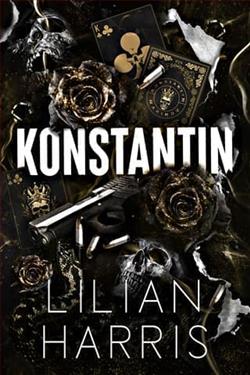Page 12 of The Burning Wire (Lincoln Rhyme 9)
Chapter 5
ALGONQUIN CONSOLIDATED POWER substation MH-10 was a miniature medieval castle in a quiet area south of Lincoln Center. It was made of unevenly cut limestone, dingy and pitted from decades of New York City pollution and grime. The cornerstone was worn but you could easily read, 1928.
It was just before 2 p.m. when Amelia Sachs skidded her maroon Ford Torino Cobra up to the curb in front of the place, behind the ruined bus. The car and its bubbling exhaust drew glances of curiosity or admiration from bystanders, cops and firemen. She climbed out of the driver's seat, tossed an NYPD placard on the dash and stood with hands on hips, surveying the scene. Ron Pulaski exited from the passenger door and slammed it with a solid clunk.
Sachs regarded the incongruity of the setting. Modern buildings, at least twenty or so stories high, bracketed the substation, which for some reason had been designed with turrets. The stone was streaked with white, thanks to the resident pigeons, a number of which had returned after the excitement. The windows were of jaundiced glass and covered with bars painted black.
The thick metal door was open and the room inside was dark.
With a bleat of an electronic siren a rapid response vehicle from the NYPD Crime Scene Unit eased into the area. The RRV parked, and three technicians from the main operation in Queens climbed out. Sachs had worked with them on a number of occasions and she nodded to the Latino man and the Asian woman under the direction of a senior officer, Detective Gretchen Sahloff. Sachs nodded to the detective, who waved a greeting and with a somber look at the front of the substation walked to the rear of the large van, where the newly arrived officers began to unload equipment.
Sachs's attention then moved to the sidewalk and street, cordoned off with yellow tape, beyond which a crowd of fifty or so watched the action. The bus that had been the object of the attack sat in front of the substation, empty, lopsided; the right tires were deflated. Near the front the paint was scorched. Half the windows were gray and opaque.
An EMS medic approached, a stocky African-American woman, and nodded. Sachs said, "Hi."
The woman gave a tentative nod of greeting. Med techs had witnessed just about all the carnage you could see but she was shaken. "Detective, you better take a look."
Sachs followed her to the ambulance, where a body lay on a gurney, waiting transport to the morgue. It was covered with a dark green waxy tarp.
"Was the last passenger, looks like. We thought we could save him. But . . . we only got him this far."
"Electrocuted?"
"You better see," she whispered. And lifted the covering.
Sachs froze as the smell of burned skin and hair rose and she gazed at the victim, a Latino in a business suit--or what was left of one. His back and much of the right side of his body was a mix of skin and cloth from the burn. She guessed second and third degree. But that wasn't what unsettled her so much; she'd seen bad burns, accidental and intentional, in her line of work. The most horrifying sight was in his flesh, exposed when the EMS team had cut away the cloth of his suit. She was looking at dozens of smooth puncture wounds, which covered his body. It was as if he'd been hit by a blast from a huge shotgun.
"Most of them," the medic said, "entrance and exit."
They went all the way through?
"What'd cause that?"
"Don't know. Never seen anything like it, all my years."
And Sachs realized something else. The wounds were all distinct and clearly visible. "There's no blood."
"Whatever it was cauterized the wounds. That's why . . ." Her voice went soft. "That's why he stayed conscious for as long as he did."
Sachs couldn't imagine the pain. "How?" she asked, half to herself.
And then she got the answer.
"Amelia," Ron Pulaski called.
She glanced toward him.
"The bus sign pole. Take a look. Brother . . ."
"Jesus," she muttered. And walked closer to the edge of the crime scene tape. About six feet from the ground a hole had been blasted clean through the metal pole, five inches wide. The metal had melted like plastic under a blowtorch. She then focused on the windows of the bus and a delivery truck parked nearby. She'd thought the glass was frosted from the fire. But, no, small bits of shrapnel--the same that had killed the passenger--had hit the vehicles. The sheet-metal skins were also punctured.
"Look," she whispered, pointing at the sidewalk and the facade of the substation. A hundred tiny craters had been dug into the stone.
"Was it a bomb?" Pulaski asked. "Maybe the respondings missed it."
Sachs opened a plastic bag and removed blue latex gloves. Pulling them on, she bent down and collected a small disk of metal shaped like a teardrop at the base of the post. It was so hot it softened the glove.
When she realized what it was, she shivered.















